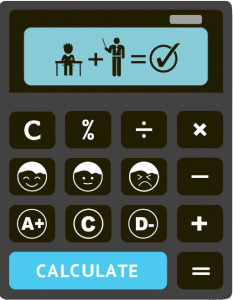Overview
In year 6 maths, you will embark on an exciting journey into the world of number patterns and algebra. These concepts are crucial for developing problem-solving skills and laying the foundation for advanced mathematical understanding. By spending some time understanding these concepts, you will enhance your mathematical thinking and prepare yourself for future algebraic adventures.
Learning Outcomes
After reading this article, you will:
- Recognize and analyze various types of number patterns.
- Develop strategies to complete number sentences and find missing values.
- Explore tables of values to identify patterns and understand relationships.
- Be able to balance scales, which form the basis of Algebraic equations.
Increasing and Decreasing Number Patterns
Number patterns or number sequences are groups of numbers where each number relates to the previous one in a specific way. These patterns have associated rules that allow us to predict subsequent numbers. Let’s consider a couple of examples:
Example 1:
4, 16, 28, 40, 52, 64, 76,…
Notice how each number in the pattern above is 12 more than the previous number. We can say that the pattern is increasing by 12. In other words, the rule is “add 12”. The next number after 76 would be 76 + 12 = 88, and the one after that would be 88 + 12 = 100.
Example 2:
275, 248, 221, 194, 167, 140,…
Here, the rule is “subtract 27”, as each number is 27 less than the previous one. The number that should come after 140 is 140 – 27 = 113. Got it? It’s your turn now. See if you can find the rule and predict the next two numbers in the following sequences:
(a) 3, 9, 27, 81, 243, …
(b) 128, 64, 32, 16, 8, …
Completing the Number Sentence
Look at the following number sentences:
175 – ? = 58
Can you find out what number can replace the ‘?’? If you are struggling, think of a similar, but simpler sentence:
8 – ? = 3
We know that the ‘?’ stands for 5. How do you get a 5, given an 8 and a 3? By subtracting them, right? So, just do the same in the number sentence above.
175 – 58 = 117
So, the ‘?’ stands for 117.
Here’s another one:
32 x ? = 192
What do you do with 192 and 32 to find the number represented by the ‘?’? Do you add, subtract, multiply, or divide them? Again, think of a similar yet easier sentence, such as 5 x ? = 20.
We all know that 5 x 4 = 20, and to get the 4, we divide 20 by 5.
Therefore, the ‘?’ = \(192\div 32 = 6\)
Your turn:
\(?\div 6 = 36\)
Number Tables
In a number table having two rows, each number on the top row is related to the number right below it (in the bottom row) using a rule. If we can find the rule out, then we can find the missing numbers. Here are a couple of examples:
| Number 1 | 2 | 4 | 6 | 8 | 10 |
|---|---|---|---|---|---|
| Number 2 | 5 | 9 | 13 | 17 | ? |
It is important to understand that the relationship between ‘?’ and 10 is the same as that between 5 and 2, 9 and 4, 13 and 6, and 17 and 8. What’s that relationship? It’s multiply Number 1 by 2 and add 1 to get Number 2.
2 x 2 + 1 = 5
4 x 2 + 1 = 9 and so on…
Therefore, ‘?’ = 10 x 2 + 1 = 21. Got it? Your turn now. See if you can figure out the missing numbers in the table below:
| Number 1 | 1 | 2 | 3 | 4 | ? |
|---|---|---|---|---|---|
| Number 2 | 1 | 4 | 9 | ? | 64 |
Balancing Scales
Have you seen a balanced weighing scale? The scale is balanced only when the two sides have the same weight put on them. Look at the picture below.
All the balls are identical. The box on the left pan has a certain number of balls in it. Can you tell how many balls there are in the box, given that the scale is balanced? Ignore the weight of the box.
To answer the question above, think of it this way: first, remove the two balls from the left. Once you do that, you must also remove two balls from the right so that the scale remains balanced. This leads us to the picture below.
As there are 4 balls remaining on the right and the (weightless) box with balls in it on the left, to keep the scale balanced, the box must have 4 balls in it.
Your turn: Each box in the figure below have the same number of balls. The boxes are weightless, and the balls are identical. Can you find out how many balls there are in each box?
Hint: Keep removing the same number of balls and boxes from both sides until you have one box left.
Wrap Up
This was an introduction to number patterns and algebraic concepts in year 6 maths. Understanding these fundamental ideas will serve as a strong foundation for future mathematical learning. Keep practising and applying these concepts to solve challenging problems. If you ever need assistance with year 6 maths, don’t hesitate to contact us for support.









